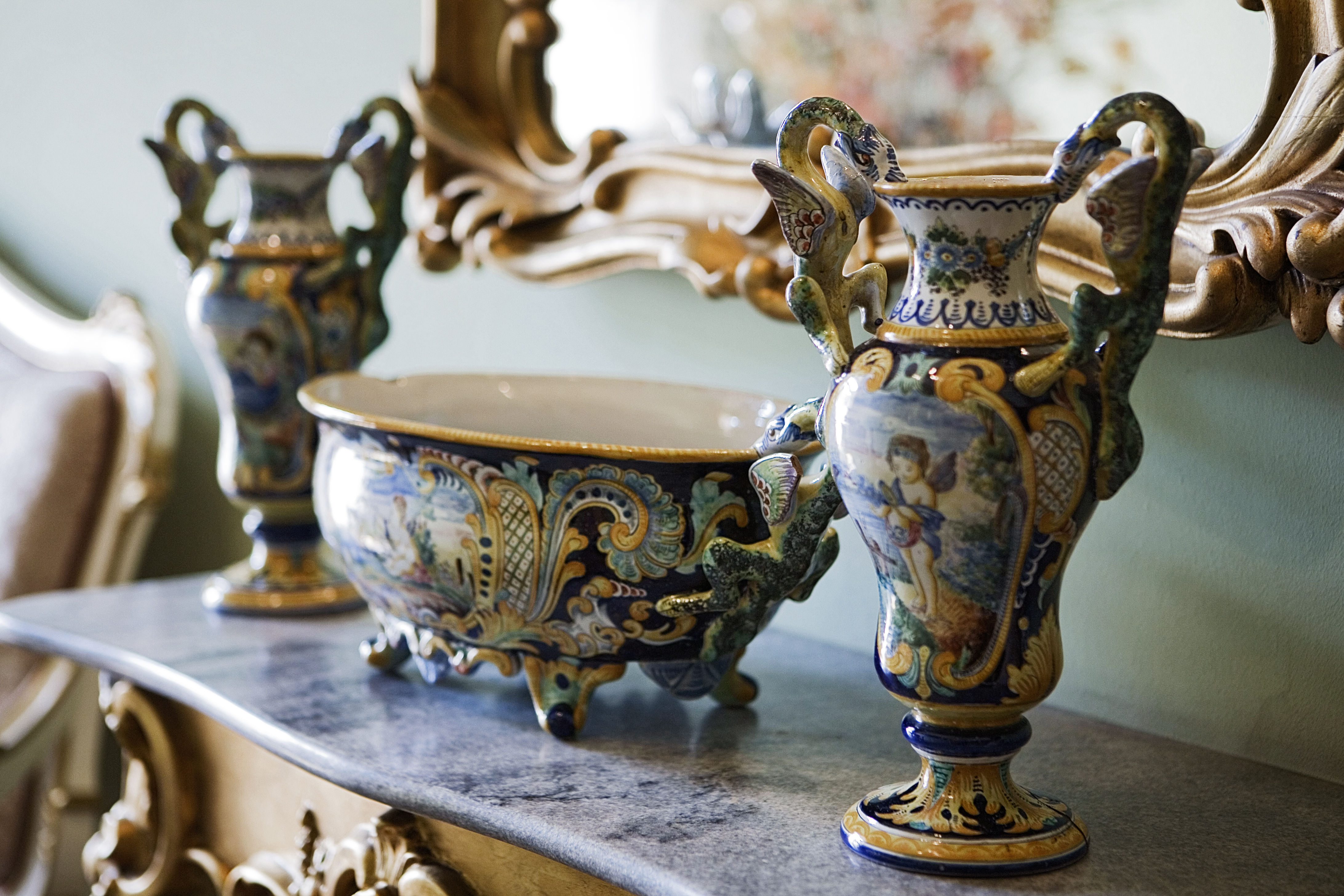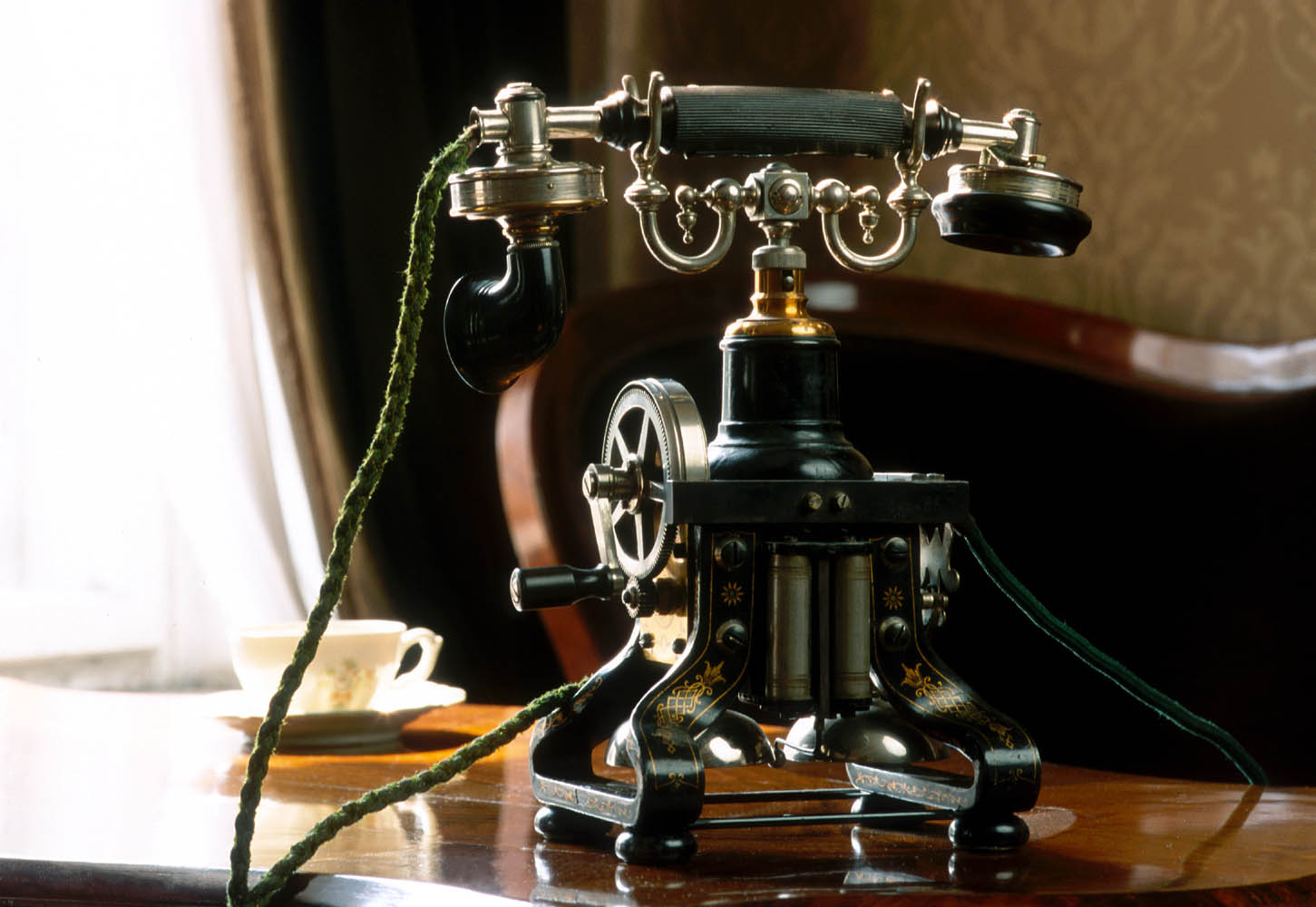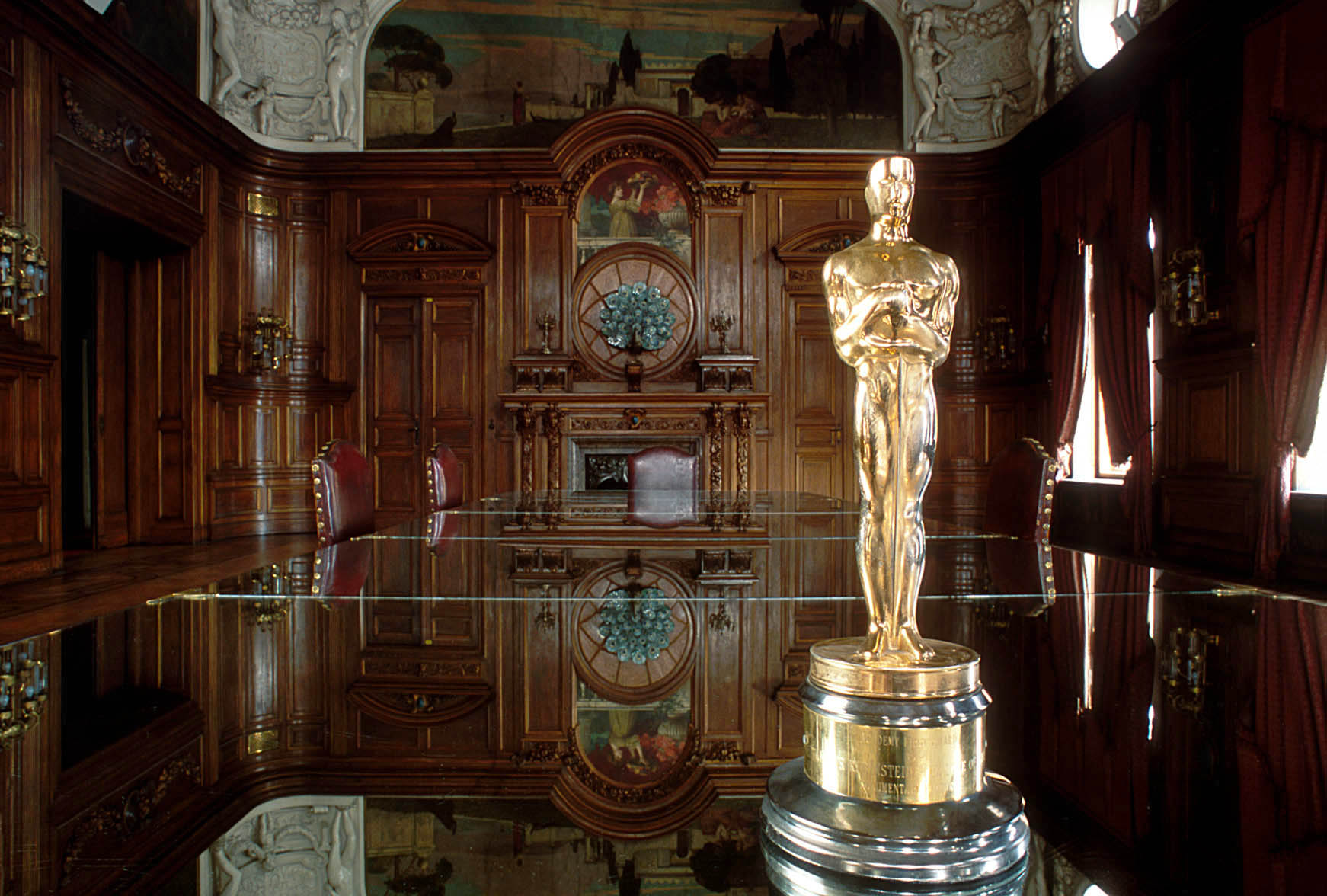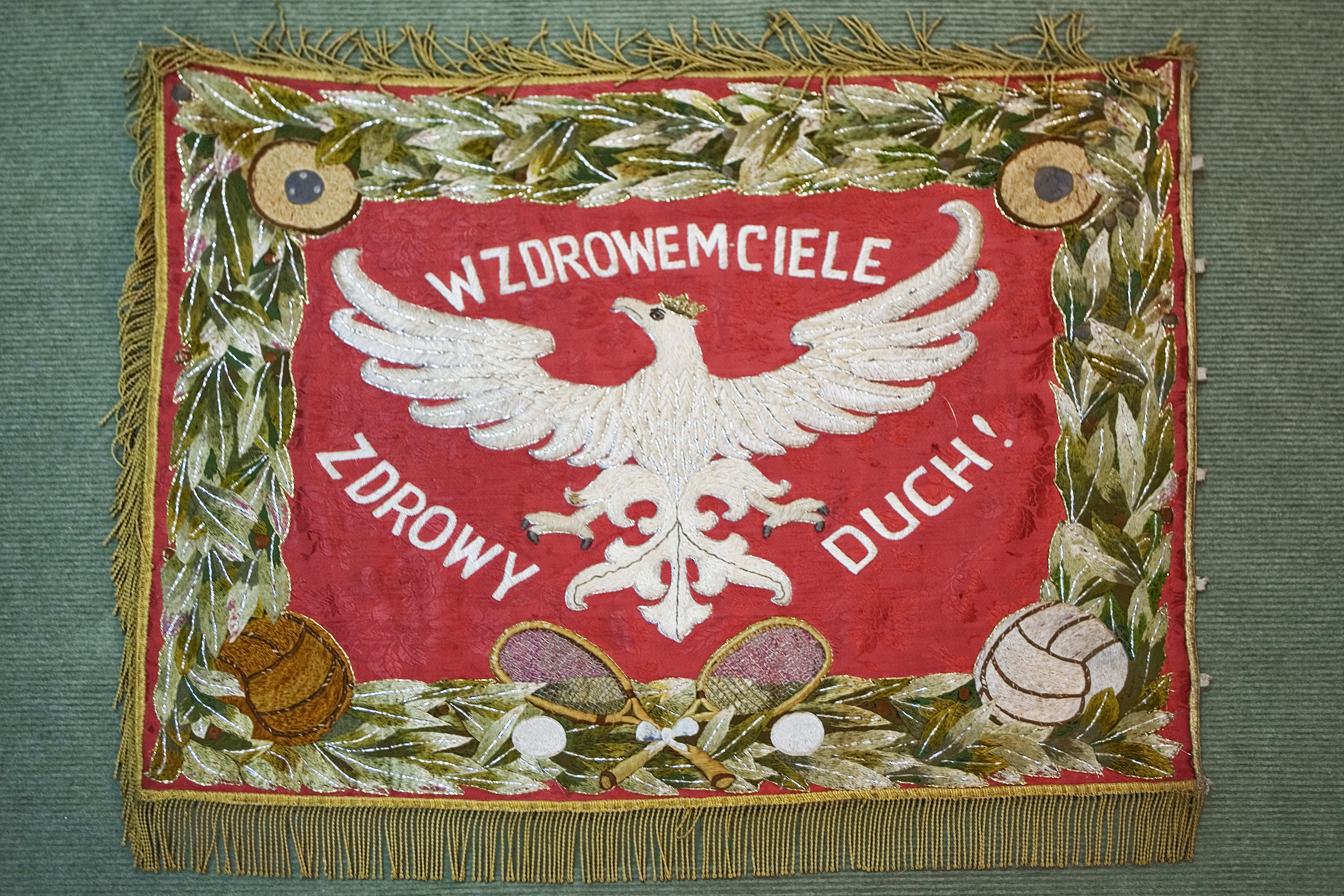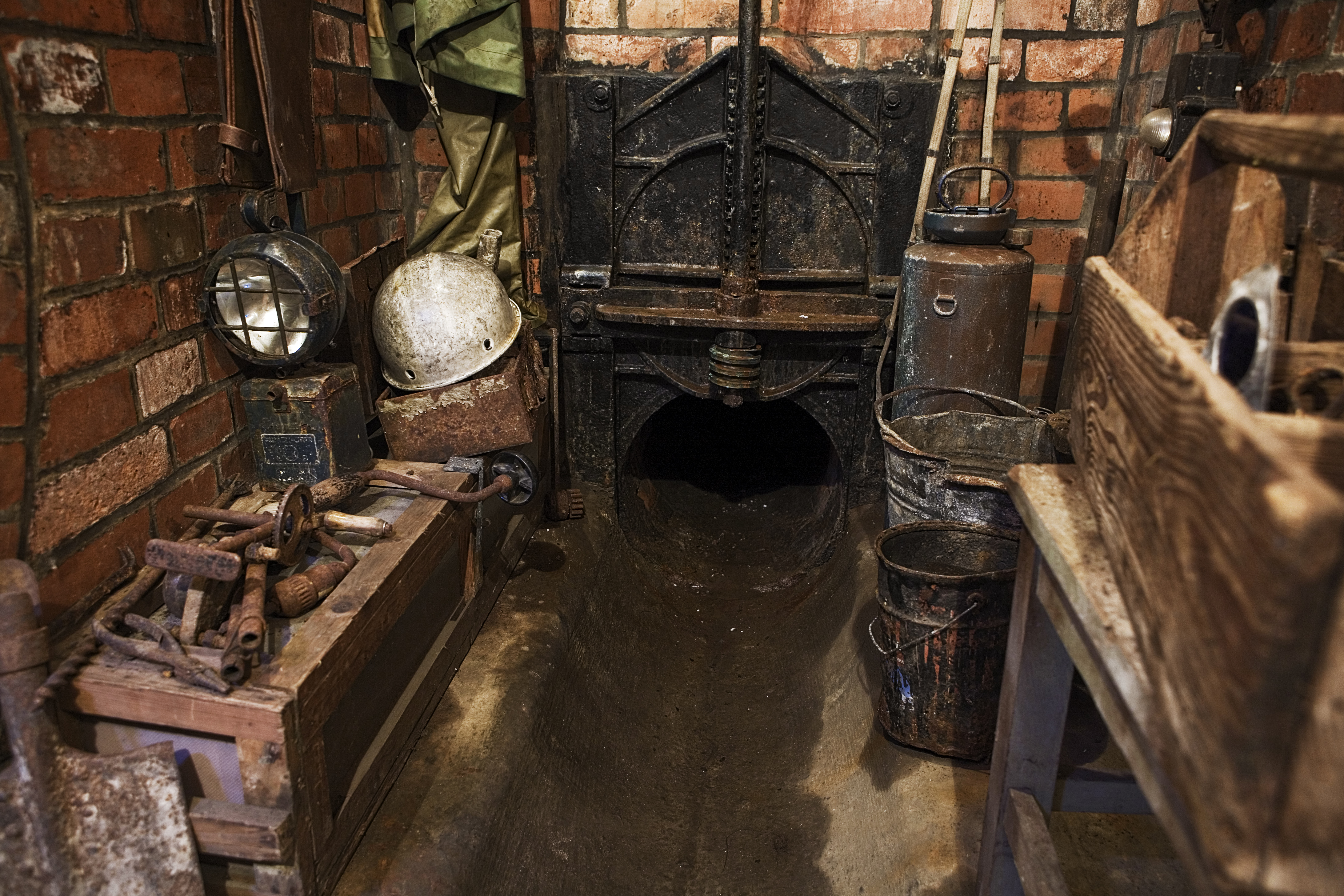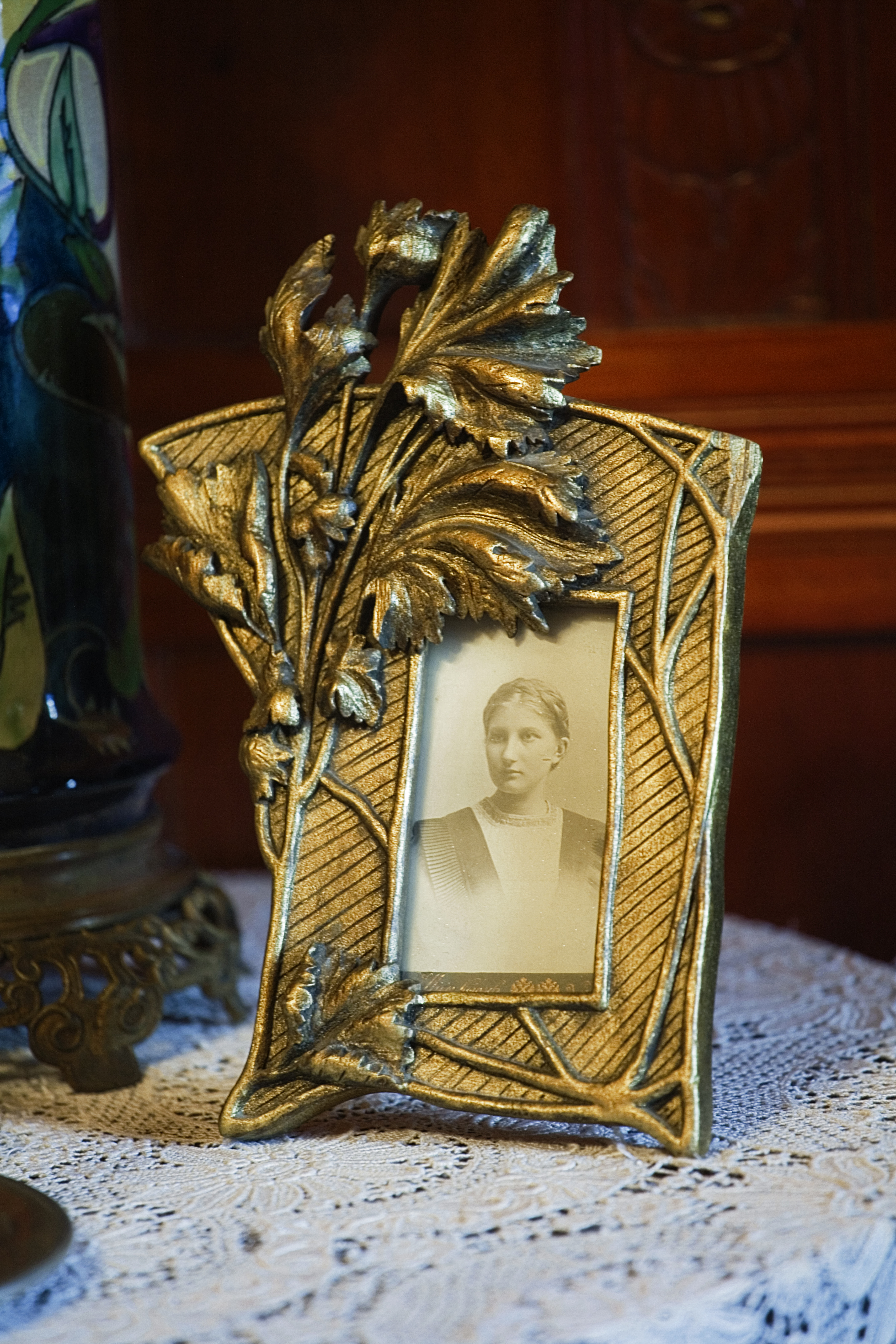The basic aim of the activity of the Museum of the City of Łódź, which stems both from the Act on Museums and the Museum bylaw, is to collect, protect, make available and present goods that form part of our natural and cultural heritage, both material and immaterial in
character, especially those connected with different stages of development and history of the City of Łódź. Since its establishment on 30 October 1975 as the Museum of the History of Łódź, the institution has been working towards that aim with consistency and with enormous enthusiasm. In case of the Museum of the City of Łódź, the collection has been built from scratch, the Museum did not take over (as it has happened in case of other local museums) collections of other institutions. Since the time of its establishment, the Museum has been gathering objects, which both present and document the city life and constitute products of the cultural and artistic milieu of Łódź.
Currently, the collection of the Museum of the City of Łódź includes over 62 thousand exhibits and the number is growing successively. The collected objects, inscribed in the museum inventory, are classified in a number of categories: iconographic, numismatic, ethnographic, and archeologic collections as well as collections of art industry, painting, sculpture, architecture and urban planning, music, literature, and separate collections related to the history of the City, both the oldest as well as the current one. The Museum of Sports and Tourism – Branch of the Museum of the City of Łódź has been gathering a rich collection connected to the history of sport in Łódź.
In case of the Museum of the City of Łódź, an important criterion that influences the acceptance of objects to the museum collection is the relation of a given object to our City, its history, people who lived in Łódź, both the ‘ordinary’ citizens of Łódź, who did not stand out among thousands of other citizens with their everyday life and work, as well as the distinguished ones, who contributed to rendering Łódź famous, also on the international arena, with their life, work and creative output. A very important part of the Museum’s collection is formed by works and mementos of creators that either came from Łódź or were active here, both those that lived in late 19th century and the contemporary ones.
In the Museum’s repertory there are also furniture sets, lamps and chandeliers, objects that constituted elements of interior furnishings, including numerous charming products of the art industry. The Museum owns interesting collections of paintings, posters and engravings as well as sculptures. The Museum’s inventory includes multiple photographs that present Łódź: the city’s architecture and its citizens, important events: cultural, social and political ones. The Museum owns an interesting collection of 19th-century portrait photographs, numerous tableaux, a collection of postcards and advertising vignettes. The historical collection that documents the history of Łódź is very extensive and it includes documents, ephemera, correspondence, posters, bills of exchange and old coins, numerous decorations and medals. An important place in the collection of the Museum of the City of Łódź, depicting the life of the citizens of old, is taken also by objects connected with the religious life. Łódź at the turn of the 19th and 20th centuries was a multicultural and multidenominational city and that is why in the repertory of the Museum there are Judaica as well as objects connected with the catholic, evangelical and Orthodox traditions.
The Museum of the City of Łódź has its seat in the most stately palace among all the palaces that formerly belonged to the factory owners of Łódź: the Palace of Izrael Poznański. This representative dwelling, which was extended in several stages, is one of the most precious monuments of the historical heritage of Łódź; together with the surrounding factory and housing compound it is an example of the industrial Łódź of late 19th and early 20th century. Over the years, the Museum has put a lot of effort into restoring the former glamour and splendour to the Palace and its interiors. The carefully renovated palace interiors, equipped with furniture, works of art and objects of everyday use from the Museum’s collection, constitute a testimony of the times of glory of the industrial empire of the Poznański Family and bring us closer to the times and way of life of typical Lodzermenschen.
In the vast spaces of the palace, exhibitions that form part of the Pantheon of Great Citizens of Łódź were also arranged. Among them there are studies of: Marek Edelman, Alexandre Tansman, Julian Tuwim, Jan Karski and Karl Dedecius. In the Museum there functions Arthur Rubinstein’s Music Gallery, which is an exposition where important and interesting objects connected with Arthur Rubinstein, donated to the Museum after the outstanding pianist’s death, were made available to the public. In the studies of the Great Citizens of Łódź we present objects of everyday use, but also the ones related to the work they performed, which formerly belonged to famous citizens of Łódź, as well as numerous awards and valuable decorations. In the collection of the Museum of the City of Łódź connected with the Great Citizens of Łódź there are, among other things, interesting iconographic objects, posters, very first editions of famous works, and letters. It is in the Museum of the City of Łódź, in the Pantheon of Great Citizens of Łódź, where you can admire, among other things, the only Oscar statue in Łódź, which was awarded to Arthur Rubinstein by the American Motion Picture Academy, Julian Tuwim’s pen or the desk at which Karl Dedecius worked.
The Museum of Sports and Tourism, Branch of the Museum of the City of Łódź, owns rich collections as well, which comprise over 26 thousand objects: awards and statues, old coins, archival materials, iconographies and sports equipment connected with the sport of Łódź, especially with sportspeople who over the years have put a lot of effort into its development. The collection includes valuable relics of Maria Kwaśniewska, a citizen of Łódź and the bronze medallist in javelin throw from the Olympics in Berlin in 1936, mostly connected with Łódź Sports Club, or of Jadwiga Wajs, an athlete born in Pabianice near Łódź, the winner of the bronze medal in discus throw from the Olympics in Los Angeles in 1932 and the silver medal from the Olympics in Berlin in 1936.
For many years, the sport of Łódź has been also associated with excellent track cyclists, including the multigenerational Bek family, who for almost half a century created the tradition of track cycling in the city of textile workers. The Museum of Sports owns a collection of awards and diplomas as well as a precious bike intended precisely for the aforementioned discipline of sport.
Sport in Łódź is also over one hundred years of tradition connected with football and such figures as the legendary player of the Łódź Sports Club, Władysław Król – the goalkeeper that stooped England, Jan Tomaszewski or Leszek Jezierski – trainer and the creator of the excellent team of Widzew Łódź from the 1970s. The collection would not be complete without mementos of the outstanding career of Zbigniew Boniek, the most readily recognisable Polish footballer from the 1980s. The collection also includes the cups won by the football clubs of Łódź, both the biggest and most popular ones and those that no longer exist.
The sport of Łódź is a very wide range of disciplines, from chess, through motor sports, to tourism. In Łódź, there were also active sports associations that functioned in industrial production plants and those created by ethnic minorities (Jewish and German ones) before 1939, today non-existent. The relics and testimonies related with them are currently present in the collection of the Museum of Sports and Tourism, which encompasses the period from late 19th century to early 21st century.
The basic aim of the activity of the Museum of the City of Łódź, which stems both from the Act on Museums and the Museum bylaw, is to collect, protect, make available and present goods that form part of our natural and cultural heritage, both material and immaterial in
character, especially those connected with different stages of development and history of the City of Łódź. Since its establishment on 30 October 1975 as the Museum of the History of Łódź, the institution has been working towards that aim with consistency and with enormous enthusiasm. In case of the Museum of the City of Łódź, the collection has been built from scratch, the Museum did not take over (as it has happened in case of other local museums) collections of other institutions. Since the time of its establishment, the Museum has been gathering objects, which both present and document the city life and constitute products of the cultural and artistic milieu of Łódź.
Currently, the collection of the Museum of the City of Łódź includes over 62 thousand exhibits and the number is growing successively. The collected objects, inscribed in the museum inventory, are classified in a number of categories: iconographic, numismatic, ethnographic, and archeologic collections as well as collections of art industry, painting, sculpture, architecture and urban planning, music, literature, and separate collections related to the history of the City, both the oldest as well as the current one. The Museum of Sports and Tourism – Branch of the Museum of the City of Łódź has been gathering a rich collection connected to the history of sport in Łódź.
In case of the Museum of the City of Łódź, an important criterion that influences the acceptance of objects to the museum collection is the relation of a given object to our City, its history, people who lived in Łódź, both the ‘ordinary’ citizens of Łódź, who did not stand out among thousands of other citizens with their everyday life and work, as well as the distinguished ones, who contributed to rendering Łódź famous, also on the international arena, with their life, work and creative output. A very important part of the Museum’s collection is formed by works and mementos of creators that either came from Łódź or were active here, both those that lived in late 19th century and the contemporary ones.
In the Museum’s repertory there are also furniture sets, lamps and chandeliers, objects that constituted elements of interior furnishings, including numerous charming products of the art industry. The Museum owns interesting collections of paintings, posters and engravings as well as sculptures. The Museum’s inventory includes multiple photographs that present Łódź: the city’s architecture and its citizens, important events: cultural, social and political ones. The Museum owns an interesting collection of 19th-century portrait photographs, numerous tableaux, a collection of postcards and advertising vignettes. The historical collection that documents the history of Łódź is very extensive and it includes documents, ephemera, correspondence, posters, bills of exchange and old coins, numerous decorations and medals. An important place in the collection of the Museum of the City of Łódź, depicting the life of the citizens of old, is taken also by objects connected with the religious life. Łódź at the turn of the 19th and 20th centuries was a multicultural and multidenominational city and that is why in the repertory of the Museum there are Judaica as well as objects connected with the catholic, evangelical and Orthodox traditions.
The Museum of the City of Łódź has its seat in the most stately palace among all the palaces that formerly belonged to the factory owners of Łódź: the Palace of Izrael Poznański. This representative dwelling, which was extended in several stages, is one of the most precious monuments of the historical heritage of Łódź; together with the surrounding factory and housing compound it is an example of the industrial Łódź of late 19th and early 20th century. Over the years, the Museum has put a lot of effort into restoring the former glamour and splendour to the Palace and its interiors. The carefully renovated palace interiors, equipped with furniture, works of art and objects of everyday use from the Museum’s collection, constitute a testimony of the times of glory of the industrial empire of the Poznański Family and bring us closer to the times and way of life of typical Lodzermenschen.
In the vast spaces of the palace, exhibitions that form part of the Pantheon of Great Citizens of Łódź were also arranged. Among them there are studies of: Marek Edelman, Alexandre Tansman, Julian Tuwim, Jan Karski and Karl Dedecius. In the Museum there functions Arthur Rubinstein’s Music Gallery, which is an exposition where important and interesting objects connected with Arthur Rubinstein, donated to the Museum after the outstanding pianist’s death, were made available to the public. In the studies of the Great Citizens of Łódź we present objects of everyday use, but also the ones related to the work they performed, which formerly belonged to famous citizens of Łódź, as well as numerous awards and valuable decorations. In the collection of the Museum of the City of Łódź connected with the Great Citizens of Łódź there are, among other things, interesting iconographic objects, posters, very first editions of famous works, and letters. It is in the Museum of the City of Łódź, in the Pantheon of Great Citizens of Łódź, where you can admire, among other things, the only Oscar statue in Łódź, which was awarded to Arthur Rubinstein by the American Motion Picture Academy, Julian Tuwim’s pen or the desk at which Karl Dedecius worked.
The Museum of Sports and Tourism, Branch of the Museum of the City of Łódź, owns rich collections as well, which comprise over 26 thousand objects: awards and statues, old coins, archival materials, iconographies and sports equipment connected with the sport of Łódź, especially with sportspeople who over the years have put a lot of effort into its development. The collection includes valuable relics of Maria Kwaśniewska, a citizen of Łódź and the bronze medallist in javelin throw from the Olympics in Berlin in 1936, mostly connected with Łódź Sports Club, or of Jadwiga Wajs, an athlete born in Pabianice near Łódź, the winner of the bronze medal in discus throw from the Olympics in Los Angeles in 1932 and the silver medal from the Olympics in Berlin in 1936.
For many years, the sport of Łódź has been also associated with excellent track cyclists, including the multigenerational Bek family, who for almost half a century created the tradition of track cycling in the city of textile workers. The Museum of Sports owns a collection of awards and diplomas as well as a precious bike intended precisely for the aforementioned discipline of sport.
Sport in Łódź is also over one hundred years of tradition connected with football and such figures as the legendary player of the Łódź Sports Club, Władysław Król – the goalkeeper that stooped England, Jan Tomaszewski or Leszek Jezierski – trainer and the creator of the excellent team of Widzew Łódź from the 1970s. The collection would not be complete without mementos of the outstanding career of Zbigniew Boniek, the most readily recognisable Polish footballer from the 1980s. The collection also includes the cups won by the football clubs of Łódź, both the biggest and most popular ones and those that no longer exist.
The sport of Łódź is a very wide range of disciplines, from chess, through motor sports, to tourism. In Łódź, there were also active sports associations that functioned in industrial production plants and those created by ethnic minorities (Jewish and German ones) before 1939, today non-existent. The relics and testimonies related with them are currently present in the collection of the Museum of Sports and Tourism, which encompasses the period from late 19th century to early 21st century.
The basic aim of the activity of the Museum of the City of Łódź, which stems both from the Act on Museums and the Museum bylaw, is to collect, protect, make available and present goods that form part of our natural and cultural heritage, both material and immaterial in
character, especially those connected with different stages of development and history of the City of Łódź. Since its establishment on 30 October 1975 as the Museum of the History of Łódź, the institution has been working towards that aim with consistency and with enormous enthusiasm. In case of the Museum of the City of Łódź, the collection has been built from scratch, the Museum did not take over (as it has happened in case of other local museums) collections of other institutions. Since the time of its establishment, the Museum has been gathering objects, which both present and document the city life and constitute products of the cultural and artistic milieu of Łódź.
Currently, the collection of the Museum of the City of Łódź includes over 62 thousand exhibits and the number is growing successively. The collected objects, inscribed in the museum inventory, are classified in a number of categories: iconographic, numismatic, ethnographic, and archeologic collections as well as collections of art industry, painting, sculpture, architecture and urban planning, music, literature, and separate collections related to the history of the City, both the oldest as well as the current one. The Museum of Sports and Tourism – Branch of the Museum of the City of Łódź has been gathering a rich collection connected to the history of sport in Łódź.
In case of the Museum of the City of Łódź, an important criterion that influences the acceptance of objects to the museum collection is the relation of a given object to our City, its history, people who lived in Łódź, both the ‘ordinary’ citizens of Łódź, who did not stand out among thousands of other citizens with their everyday life and work, as well as the distinguished ones, who contributed to rendering Łódź famous, also on the international arena, with their life, work and creative output. A very important part of the Museum’s collection is formed by works and mementos of creators that either came from Łódź or were active here, both those that lived in late 19th century and the contemporary ones.
In the Museum’s repertory there are also furniture sets, lamps and chandeliers, objects that constituted elements of interior furnishings, including numerous charming products of the art industry. The Museum owns interesting collections of paintings, posters and engravings as well as sculptures. The Museum’s inventory includes multiple photographs that present Łódź: the city’s architecture and its citizens, important events: cultural, social and political ones. The Museum owns an interesting collection of 19th-century portrait photographs, numerous tableaux, a collection of postcards and advertising vignettes. The historical collection that documents the history of Łódź is very extensive and it includes documents, ephemera, correspondence, posters, bills of exchange and old coins, numerous decorations and medals. An important place in the collection of the Museum of the City of Łódź, depicting the life of the citizens of old, is taken also by objects connected with the religious life. Łódź at the turn of the 19th and 20th centuries was a multicultural and multidenominational city and that is why in the repertory of the Museum there are Judaica as well as objects connected with the catholic, evangelical and Orthodox traditions.
The Museum of the City of Łódź has its seat in the most stately palace among all the palaces that formerly belonged to the factory owners of Łódź: the Palace of Izrael Poznański. This representative dwelling, which was extended in several stages, is one of the most precious monuments of the historical heritage of Łódź; together with the surrounding factory and housing compound it is an example of the industrial Łódź of late 19th and early 20th century. Over the years, the Museum has put a lot of effort into restoring the former glamour and splendour to the Palace and its interiors. The carefully renovated palace interiors, equipped with furniture, works of art and objects of everyday use from the Museum’s collection, constitute a testimony of the times of glory of the industrial empire of the Poznański Family and bring us closer to the times and way of life of typical Lodzermenschen.
In the vast spaces of the palace, exhibitions that form part of the Pantheon of Great Citizens of Łódź were also arranged. Among them there are studies of: Marek Edelman, Alexandre Tansman, Julian Tuwim, Jan Karski and Karl Dedecius. In the Museum there functions Arthur Rubinstein’s Music Gallery, which is an exposition where important and interesting objects connected with Arthur Rubinstein, donated to the Museum after the outstanding pianist’s death, were made available to the public. In the studies of the Great Citizens of Łódź we present objects of everyday use, but also the ones related to the work they performed, which formerly belonged to famous citizens of Łódź, as well as numerous awards and valuable decorations. In the collection of the Museum of the City of Łódź connected with the Great Citizens of Łódź there are, among other things, interesting iconographic objects, posters, very first editions of famous works, and letters. It is in the Museum of the City of Łódź, in the Pantheon of Great Citizens of Łódź, where you can admire, among other things, the only Oscar statue in Łódź, which was awarded to Arthur Rubinstein by the American Motion Picture Academy, Julian Tuwim’s pen or the desk at which Karl Dedecius worked.
The Museum of Sports and Tourism, Branch of the Museum of the City of Łódź, owns rich collections as well, which comprise over 26 thousand objects: awards and statues, old coins, archival materials, iconographies and sports equipment connected with the sport of Łódź, especially with sportspeople who over the years have put a lot of effort into its development. The collection includes valuable relics of Maria Kwaśniewska, a citizen of Łódź and the bronze medallist in javelin throw from the Olympics in Berlin in 1936, mostly connected with Łódź Sports Club, or of Jadwiga Wajs, an athlete born in Pabianice near Łódź, the winner of the bronze medal in discus throw from the Olympics in Los Angeles in 1932 and the silver medal from the Olympics in Berlin in 1936.
For many years, the sport of Łódź has been also associated with excellent track cyclists, including the multigenerational Bek family, who for almost half a century created the tradition of track cycling in the city of textile workers. The Museum of Sports owns a collection of awards and diplomas as well as a precious bike intended precisely for the aforementioned discipline of sport.
Sport in Łódź is also over one hundred years of tradition connected with football and such figures as the legendary player of the Łódź Sports Club, Władysław Król – the goalkeeper that stooped England, Jan Tomaszewski or Leszek Jezierski – trainer and the creator of the excellent team of Widzew Łódź from the 1970s. The collection would not be complete without mementos of the outstanding career of Zbigniew Boniek, the most readily recognisable Polish footballer from the 1980s. The collection also includes the cups won by the football clubs of Łódź, both the biggest and most popular ones and those that no longer exist.
The sport of Łódź is a very wide range of disciplines, from chess, through motor sports, to tourism. In Łódź, there were also active sports associations that functioned in industrial production plants and those created by ethnic minorities (Jewish and German ones) before 1939, today non-existent. The relics and testimonies related with them are currently present in the collection of the Museum of Sports and Tourism, which encompasses the period from late 19th century to early 21st century.
The basic aim of the activity of the Museum of the City of Łódź, which stems both from the Act on Museums and the Museum bylaw, is to collect, protect, make available and present goods that form part of our natural and cultural heritage, both material and immaterial in
character, especially those connected with different stages of development and history of the City of Łódź. Since its establishment on 30 October 1975 as the Museum of the History of Łódź, the institution has been working towards that aim with consistency and with enormous enthusiasm. In case of the Museum of the City of Łódź, the collection has been built from scratch, the Museum did not take over (as it has happened in case of other local museums) collections of other institutions. Since the time of its establishment, the Museum has been gathering objects, which both present and document the city life and constitute products of the cultural and artistic milieu of Łódź.
Currently, the collection of the Museum of the City of Łódź includes over 62 thousand exhibits and the number is growing successively. The collected objects, inscribed in the museum inventory, are classified in a number of categories: iconographic, numismatic, ethnographic, and archeologic collections as well as collections of art industry, painting, sculpture, architecture and urban planning, music, literature, and separate collections related to the history of the City, both the oldest as well as the current one. The Museum of Sports and Tourism – Branch of the Museum of the City of Łódź has been gathering a rich collection connected to the history of sport in Łódź.
In case of the Museum of the City of Łódź, an important criterion that influences the acceptance of objects to the museum collection is the relation of a given object to our City, its history, people who lived in Łódź, both the ‘ordinary’ citizens of Łódź, who did not stand out among thousands of other citizens with their everyday life and work, as well as the distinguished ones, who contributed to rendering Łódź famous, also on the international arena, with their life, work and creative output. A very important part of the Museum’s collection is formed by works and mementos of creators that either came from Łódź or were active here, both those that lived in late 19th century and the contemporary ones.
In the Museum’s repertory there are also furniture sets, lamps and chandeliers, objects that constituted elements of interior furnishings, including numerous charming products of the art industry. The Museum owns interesting collections of paintings, posters and engravings as well as sculptures. The Museum’s inventory includes multiple photographs that present Łódź: the city’s architecture and its citizens, important events: cultural, social and political ones. The Museum owns an interesting collection of 19th-century portrait photographs, numerous tableaux, a collection of postcards and advertising vignettes. The historical collection that documents the history of Łódź is very extensive and it includes documents, ephemera, correspondence, posters, bills of exchange and old coins, numerous decorations and medals. An important place in the collection of the Museum of the City of Łódź, depicting the life of the citizens of old, is taken also by objects connected with the religious life. Łódź at the turn of the 19th and 20th centuries was a multicultural and multidenominational city and that is why in the repertory of the Museum there are Judaica as well as objects connected with the catholic, evangelical and Orthodox traditions.
The Museum of the City of Łódź has its seat in the most stately palace among all the palaces that formerly belonged to the factory owners of Łódź: the Palace of Izrael Poznański. This representative dwelling, which was extended in several stages, is one of the most precious monuments of the historical heritage of Łódź; together with the surrounding factory and housing compound it is an example of the industrial Łódź of late 19th and early 20th century. Over the years, the Museum has put a lot of effort into restoring the former glamour and splendour to the Palace and its interiors. The carefully renovated palace interiors, equipped with furniture, works of art and objects of everyday use from the Museum’s collection, constitute a testimony of the times of glory of the industrial empire of the Poznański Family and bring us closer to the times and way of life of typical Lodzermenschen.
In the vast spaces of the palace, exhibitions that form part of the Pantheon of Great Citizens of Łódź were also arranged. Among them there are studies of: Marek Edelman, Alexandre Tansman, Julian Tuwim, Jan Karski and Karl Dedecius. In the Museum there functions Arthur Rubinstein’s Music Gallery, which is an exposition where important and interesting objects connected with Arthur Rubinstein, donated to the Museum after the outstanding pianist’s death, were made available to the public. In the studies of the Great Citizens of Łódź we present objects of everyday use, but also the ones related to the work they performed, which formerly belonged to famous citizens of Łódź, as well as numerous awards and valuable decorations. In the collection of the Museum of the City of Łódź connected with the Great Citizens of Łódź there are, among other things, interesting iconographic objects, posters, very first editions of famous works, and letters. It is in the Museum of the City of Łódź, in the Pantheon of Great Citizens of Łódź, where you can admire, among other things, the only Oscar statue in Łódź, which was awarded to Arthur Rubinstein by the American Motion Picture Academy, Julian Tuwim’s pen or the desk at which Karl Dedecius worked.
The Museum of Sports and Tourism, Branch of the Museum of the City of Łódź, owns rich collections as well, which comprise over 26 thousand objects: awards and statues, old coins, archival materials, iconographies and sports equipment connected with the sport of Łódź, especially with sportspeople who over the years have put a lot of effort into its development. The collection includes valuable relics of Maria Kwaśniewska, a citizen of Łódź and the bronze medallist in javelin throw from the Olympics in Berlin in 1936, mostly connected with Łódź Sports Club, or of Jadwiga Wajs, an athlete born in Pabianice near Łódź, the winner of the bronze medal in discus throw from the Olympics in Los Angeles in 1932 and the silver medal from the Olympics in Berlin in 1936.
For many years, the sport of Łódź has been also associated with excellent track cyclists, including the multigenerational Bek family, who for almost half a century created the tradition of track cycling in the city of textile workers. The Museum of Sports owns a collection of awards and diplomas as well as a precious bike intended precisely for the aforementioned discipline of sport.
Sport in Łódź is also over one hundred years of tradition connected with football and such figures as the legendary player of the Łódź Sports Club, Władysław Król – the goalkeeper that stooped England, Jan Tomaszewski or Leszek Jezierski – trainer and the creator of the excellent team of Widzew Łódź from the 1970s. The collection would not be complete without mementos of the outstanding career of Zbigniew Boniek, the most readily recognisable Polish footballer from the 1980s. The collection also includes the cups won by the football clubs of Łódź, both the biggest and most popular ones and those that no longer exist.
The sport of Łódź is a very wide range of disciplines, from chess, through motor sports, to tourism. In Łódź, there were also active sports associations that functioned in industrial production plants and those created by ethnic minorities (Jewish and German ones) before 1939, today non-existent. The relics and testimonies related with them are currently present in the collection of the Museum of Sports and Tourism, which encompasses the period from late 19th century to early 21st century.


